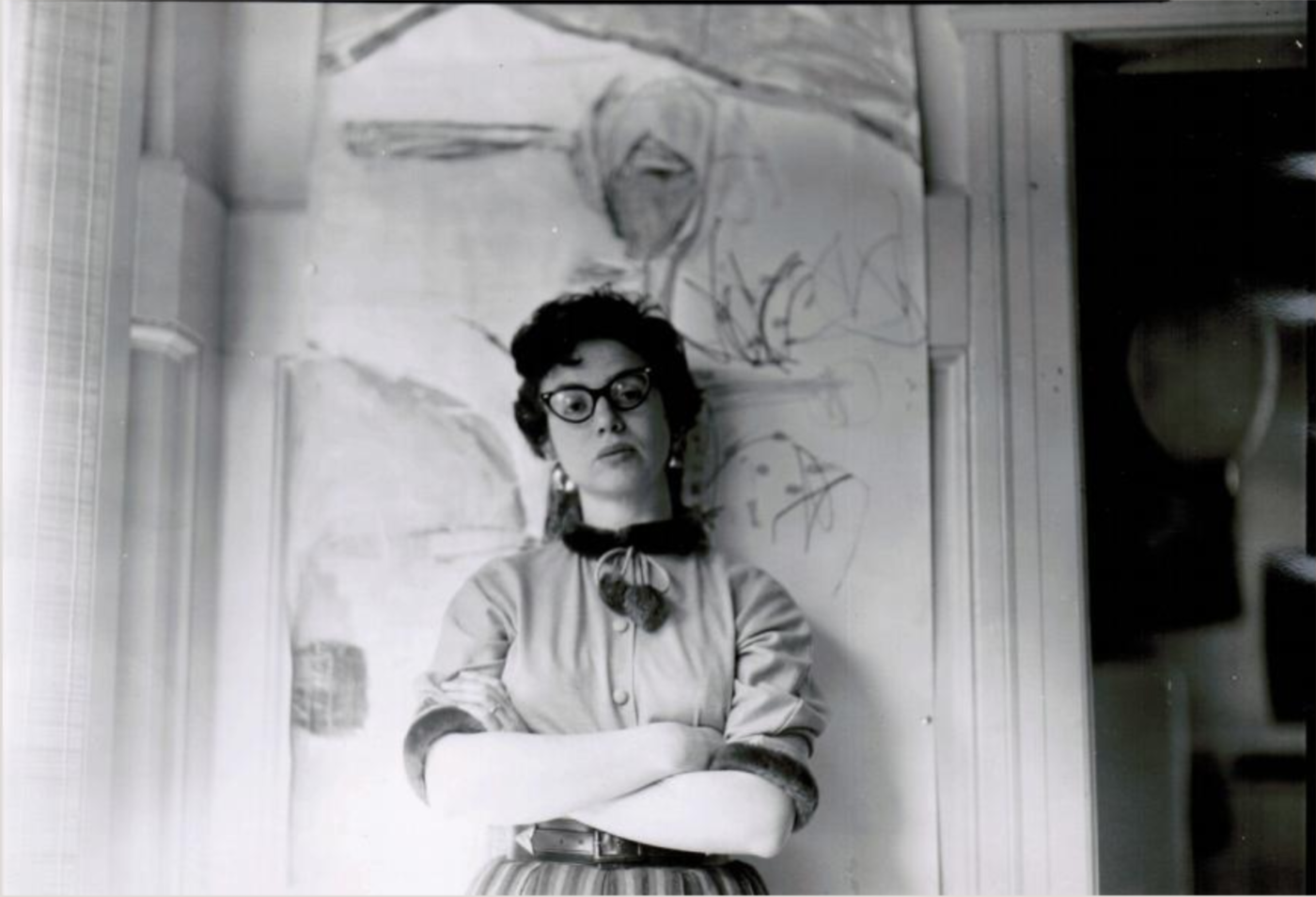#SouthOfUnionSquare, the Birthplace of American Modernism: Sonia Gechtoff
“South of Union Square, the Birthplace of American Modernism” is a series that explores how the area south of Union Square shaped some of the most influential American artists of the 20th century.

The area south of Union Square, which Village Preservation has proposed be designated an historic district, has attracted painters, writers, publishers, and radical social organizations throughout the 20th century. The neighborhood birthed a namesake social realist art movement — the Fourteenth Street School — and later hosted a number of influential artists and movements like Abstract Expressionism, the Ninth Street Five, and “The Club.” Art, politics, industry, commerce, the New York elite, and the working class collided to create an eclectic culture and built environment in this neighborhood that helped shift the center of the global art world to New York City.



Sonia Gechtoff (September 25, 1926 – February 1, 2018) was a pioneering Abstract Expressionist painter who was extremely influential in the nascent Bay Area Abstract Expressionist movement and a mainstay in the New York art world for nearly six decades. Born in Philadelphia, Gechtoff received her first earliest artistic training from her father, Leonid Gechtoff, an artist in his own right. She received a scholarship to attend the Philadelphia Museum School of Industrial Art, now the University Museum of the Arts, and graduated with a BFA in 1950. The following year, she moved to San Francisco and joined the faculty at the California School of Fine Arts. There she met fellow painters Clyfford Still, Hassle Smith, Elemer Bischoff, and James Kelly (her future husband), all of whom greatly influenced the development of her abstract work. However, it was Clyfford Still who inspired her to begin painting with a palette knife. Sonia Gechtoff perfected this technique and developed many innovative application methods that are still taught in studio art classes today. Gechtoff first gained national recognition in 1954, when her work was exhibited in the influential “Younger American Painters” exhibition at the Guggenheim Museum, New York, alongside Willem de Kooning, Franz Kline, Robert Motherwell, and Jackson Pollock.


In October 1958, Gechtoff and Kelly moved to New York and rented a space at 108 4th Avenue in the proposed South of Union Square Historic District. While at 108 4th Avenue, her work was included in the Whitney Museum of American Art’s 1958 Annual exhibition: Sculpture, Paintings, Watercolors, Drawings and 1960 Young America exhibition. She also had solo gallery exhibitions at the Ferus Gallery, Los Angeles, 1959 and the Poindexter Gallery, New York in 1959 and 1961. Gechtoff’s work was also featured in the U.S. pavilion at the 1958 Brussels World’s Fair, the 1958 Carnegie International in Pittsburgh, and the 1961 São Paulo Bienal. It was during this time that she solidified her stature in the New York art world. She left 108 4th Avenue in 1961 after she rented studio space 361 Canal Street in SoHo. Unfortunately, the building Gechtoff lived in at 108 4th Avenue was demolished in the early 1980s and replaced with a condo building.

Sonia Gechtoff was often one of the few female artists included included in discussion of Abstract Expressionist art, but her art was long woefully under appreciated. Thankfully, the artist’s long-overlooked contributions to the Ab-Ex movement have finally been acknowledged in “Women of Abstract Expressionism” (2016–17) a traveling exhibition organized by the Denver Art Museum. Thankfully, interest in her work has surged, resulting in an uptick in recent gallery exhibitions. Gechtoff’s work can be found in the permanent collections at the Museum of Modern Art in New York, the Metropolitan Museum of Art, the Whitney Museum of American Art, the Solomon R. Guggenheim Museum, the Oakland Museum of Art, the San Francisco Museum of Art, the Menil Collection, and the Smithsonian American Art Museum.


Village Preservation’s proposed South of Union Square Historic District was recently named one of 2022-2023’s “Seven to Save” — the biannual list of the most important endangered historic sites in New York State — by the Preservation League of New York State. This designation shines a spotlight on the incredibly valuable and varied architecture of this neighborhood, and its deep connections to civil rights and social justice history as well as transformative artistic, literary, and musical movements.
To learn more about the neighborhood, check out our new and frequently updated South of Union Square Map and Tours. We have received a series of extraordinary letters from individuals across the world expressing support for our campaign to create a historic district for the neighborhood South of Union Square. To help protect these incredible historic structures and other buildings in this neighborhood, click here.

Thank you so much for this informative article! We are just rediscovering this awesome artist and feature Sonia Grechtoff in the “Discover” database created by Ukrainian Arts Club that highlights American artists that has Ukrainian origin.